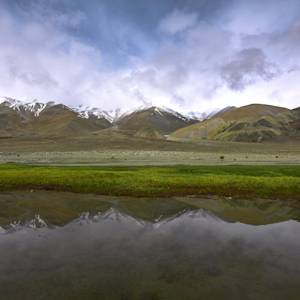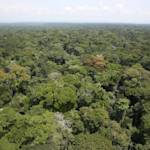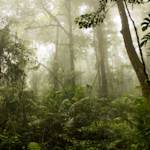Andean Cloud Forest
2023 CE • Ecuador, Peru, and Colombia
"The extraordinary cloud forests of the Andes are a type of mid-altitude tropical rainforest that extends from about 3,000 feet in elevation up to about 8,000 feet. When humid air, transpired from the billions of trees in the lowland Amazon, moves west and up the mountain slopes of the Andes, some of it condenses and falls as rain or remains in the form of low clouds and mist . . . Andean cloud forests are a top priority for biodiversity conservation because they are home to a remarkable number of endemic species . . . More than 300 species of birds are found in the cloud forests of Peru alone. 23 bird species are threatened, including the royal sunangel hummingbird, the ochre-fronted antpitta, the marvelous spatuletail, and the rare long-whiskered owlet. The forests also harbor the endangered yellow-tailed wooly monkey and five frog species. In Peru, more than one-third of the 270 endemic birds, mammals, and frogs are found in cloud forests. Environmental conditions change rapidly with elevation in the cloud forests. Consequently, plant diversity in the cloud forests exceeds that of the Amazon rainforests. For example, cloud forests are home to the greatest number of the world’s orchids. Ecuador alone has over 4,000 species with 1,300 endemic species, found nowhere else in the world . . . In the past, their remoteness kept these beautiful forests inaccessible, protecting them from human encroachment. Today, however, with modern techniques and equipment, these cloud forests are increasingly threatened as people clear large areas for agriculture or timber."
"Andean Cloud Forest," Nature and Culture International.
Image: paulsmithrj, CC BY-SA 3.0, via Wikimedia Commons


Learn about Maya Lin’s fifth and final memorial: a multi-platform science based artwork that presents an ecological history of our world - past, present, and future.

Discover ecological histories and stories of former abundance, loss, and recovery on the map of memory.

Learn how we can reduce our emissions and protect and restore species and habitats – around the world.

See how art can help us rethink the problems we face, and give us hope that each one of us can make a difference.

Help make a global memorial something personal and close to home. Share your stories of the natural world.


